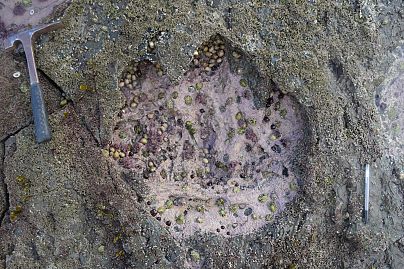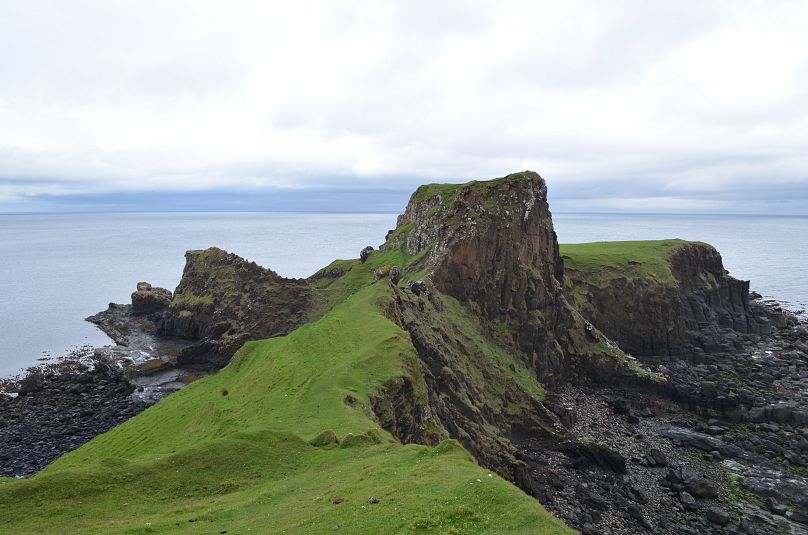The tracks shed new light on the Middle Jurassic epoch — a period from which very few fossils survived.
The discovery of around 50 huge dinosaur footprints at a site on the Isle of Skye in Scotland, UK, has been labelled "globally important".
Researchers, some from Edinburgh University, are studying the tracks, many of which belonged to long-necked sauropods — which stood up to two metres tall — and theropods, the older cousins of Tyrannosaurus rex.
"This could be one of our only windows to catch a glimpse into the fascinating Middle Jurassic period," Dr Steve Brusatte who led the university's field team, told Euronews.
He added that the discovery gave researchers a "snapshot into a day in the life of these dinosaurs".
According to Brusatte, the tracks show both types of dinosaurs hung around a shallow lagoon where they "didn't get up to much," and didn't jump or chase each other.
Left about 170 million years ago, the prints are helping scientists better examine the previously little-understood Middle Jurassic period.
Fossils from this epoch are "exceedingly rare," according to a study by the University of Edinburgh, Staffin Museum, and the Chinese Academy of Sciences, published in the Scottish Journal of Geology.
In the publication researchers said the site at Skye's Brothers' Point "preserves an abundance of small sauropod manus and pes prints and several isolated and broken medium-to-large tridactyl footprints".
Paige dePolo, who led the research at the University of Edinburgh's School of GeoSciences, said: "This site is a useful building block for us to continue fleshing out a picture of what dinosaurs were like on Skye in the Middle Jurassic."
The footprints were found in a muddy, shallow lagoon and showed the outlines of a sauropod's toes and traces of the dinosaur's fleshy heel pads.
This new site strengthens the inference, based on a previously discovered location near Duntulm Castle (Duntulm Formation) in northern Skye, that sauropods habitually spent time in lagoons during the Middle Jurassic, researchers wrote in the paper.













